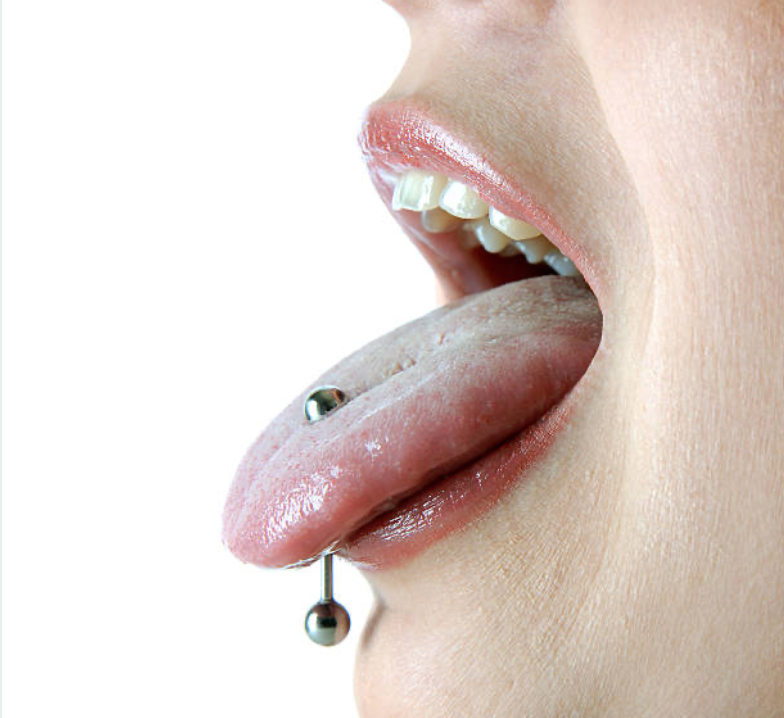The tongue is one of the most sensitive muscles in our whole body. It helps us talk to our friends and family, eat delicious foods and experience delectable cuisines. However, before setting out on this journey, it is important to be prepared for the procedure, including having a concrete plan for the healing process, and a general understanding of the pain, aftercare and common, every-day inconveniences associated with tongue piercings.

What is a Tongue Piercing?
As the name implies, a tongue piercing is the process of inserting a piercing needle from the dorsal of your tongue through to the underside, creating space for the jewellery to sit in. There are two general locations to safely pierce your tongue: the midline and the side. The midline is the center of the tongue whereas a side piercing involves penetrating through either the left or right side of the midline.
In recent times, customers have been demanding “snake eyes”, which is the process of inserting the needle horizontally through the tongue, near the tip. This is a dangerous procedure, as it forces the piercer to run their needle through various veins, which can result in complications. It is also far more prone to tooth chipping, due to its location.
Although the midline is by far the most popular location, your piercer should examine your tongue’s anatomy to insure you are receiving the proper piercing in the correct position. Everyone’s tongue is different and, depending on the placement of your veins, you may not be able to pierce in the exact location you were hoping for. Having a suitable consultation before going through with the procedure is vital to the long-term success of your piercing.
Does it Hurt?
Pain is a very personal thing. Everybody feels and tolerates pain in different ways so it is hard to rate piercing pain on a relative scale. As the tongue is a very sensitive part of your body, some pain may be involved, though it will be quick and well worth it. Some describe the pain as a sharp pinch, similar to biting your tongue while eating. Some bleeding is also to be expected. The real pain happens during the healing process, as your tongue is in constant motion and the new piercing can cause swelling and discomfort. Luckily, tongue piercings heal quicker than expected, so both the pain and the healing is short lived, if done correctly.
The Healing Process and Aftercare
Tongue rings heal relatively quickly, regardless of location. Typically, a tongue piercing heals in 4-6 weeks, which seems short even compared to an earlobe piercing which can take 2-6 months to heal! Keeping your jewellery in is mandatory, as the hole can close within a matter of hours.
Your tongue is constantly exposed to the bacteria your teeth and saliva harbor, primarily due to food impaction. It is vital to rinse your mouth with a salt rinse 2-3 times per day, to keep the piercing site clean and clear of germs and debris. This process involves mixing ¼ teaspoon of non-iodized salt with 1 cup of warm water and rinsing for a couple of minutes at a time.
Oral sex, nail biting and other habits that can jeopardize the cleanliness of your oral hygiene are off limits during the healing process, as infection can most definitely occur. Alcohol and cigarettes are also prohibited while healing, to avoid injury or infection in the piercing site.
Finally, it is imperative that you eat soft foods and drink lots of liquids, to keep your body’s immune system working properly. Eating hard, crunchy or sharp foods are inappropriate, as you run the risk of biting your tongue or your jewellery, breaking your teeth or tearing the piercing and causing unnecessary pain.
Tongue piercings are not for everyone. For some, it may seem daunting to poke a hole through such an important, high-functioning body part. However, for others, this is the perfect way to adorn and celebrate this useful little muscle!

